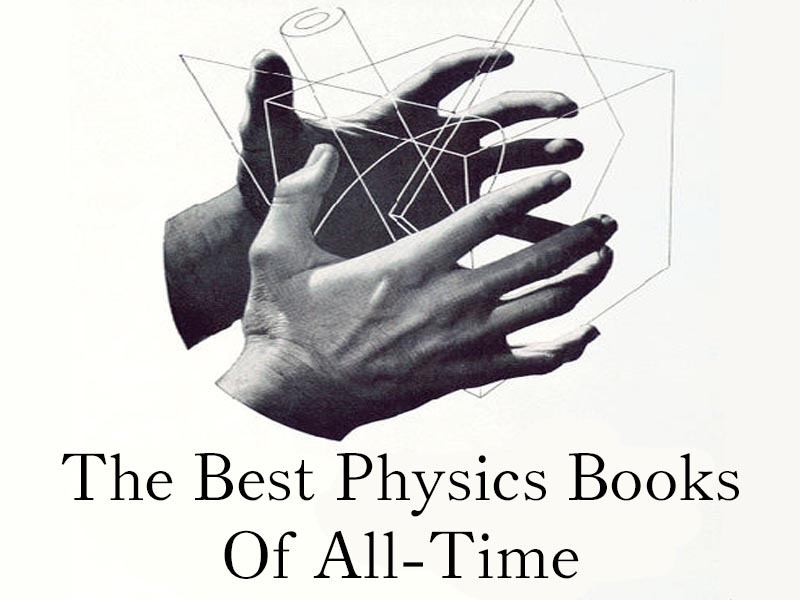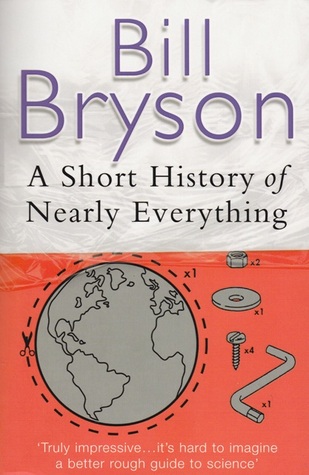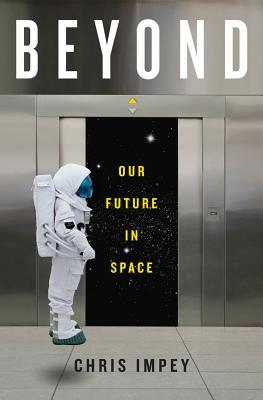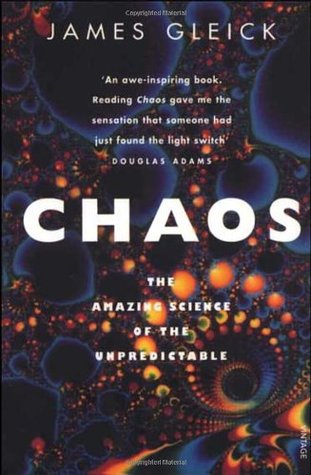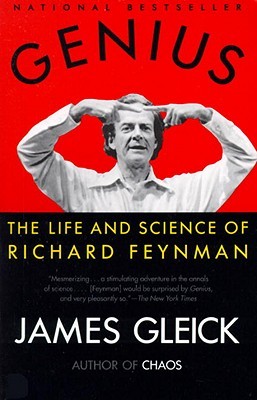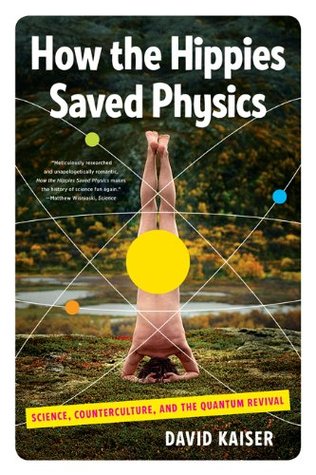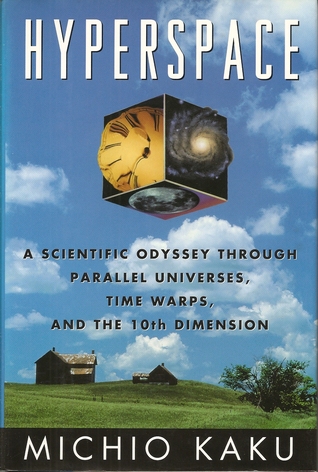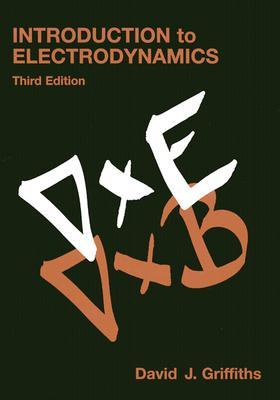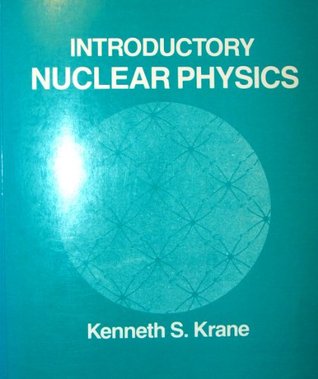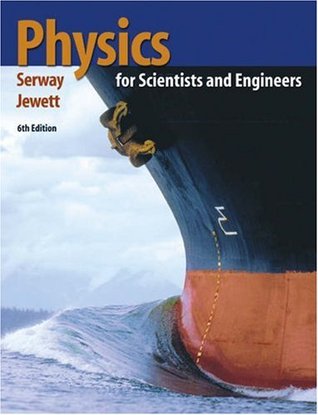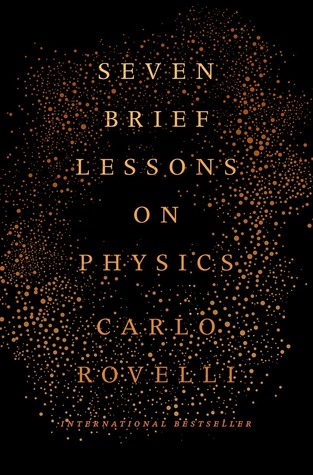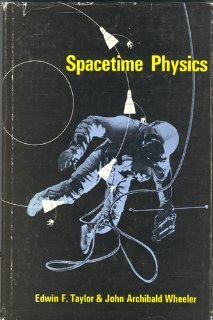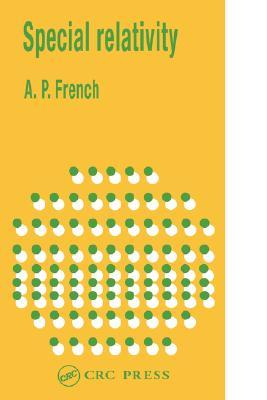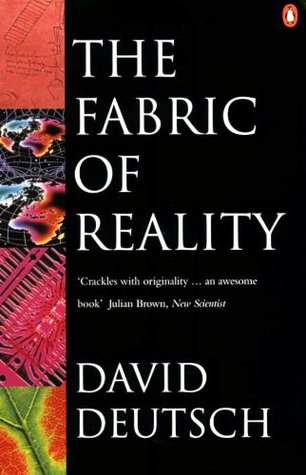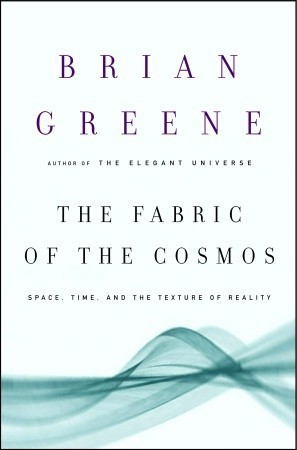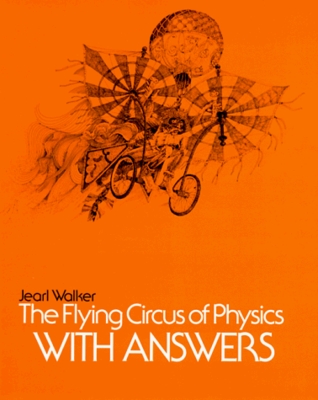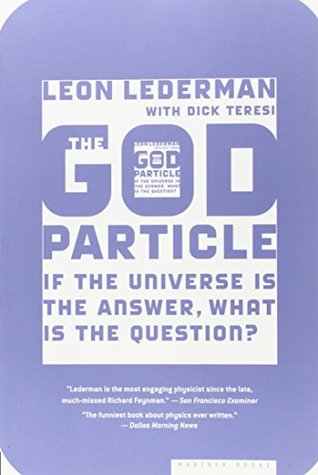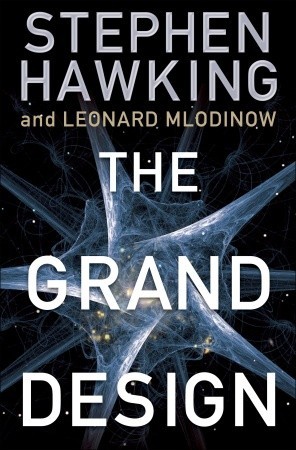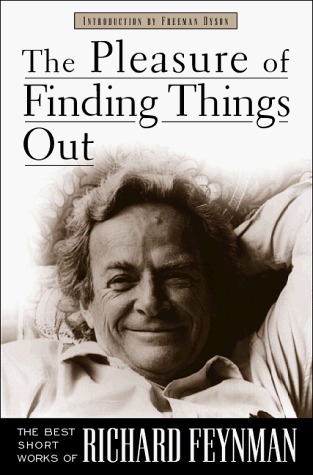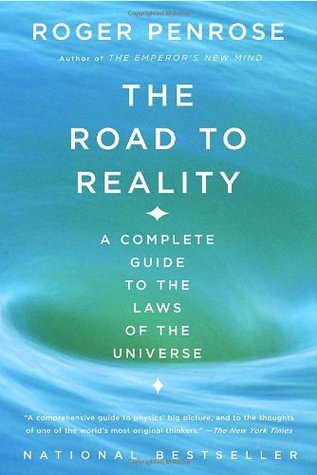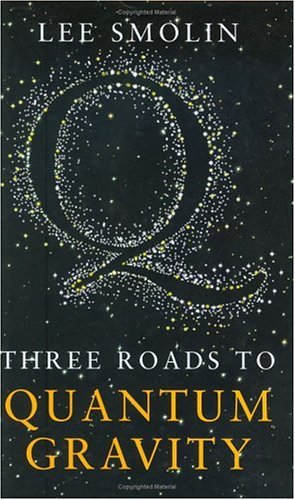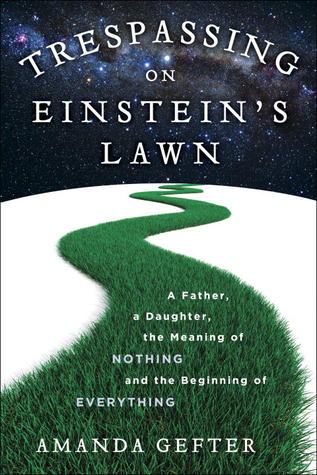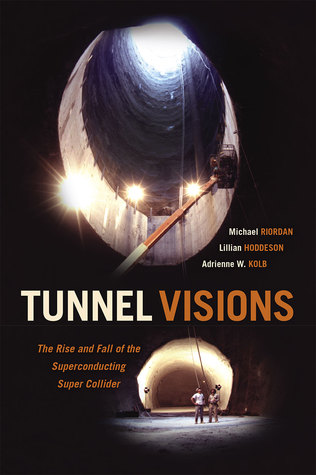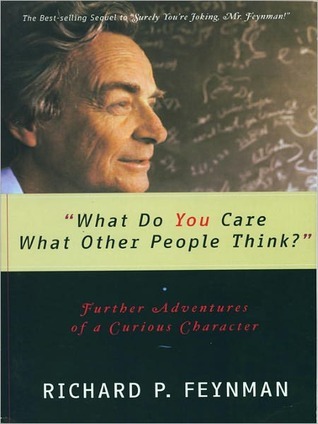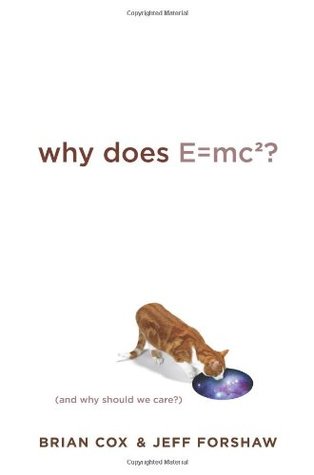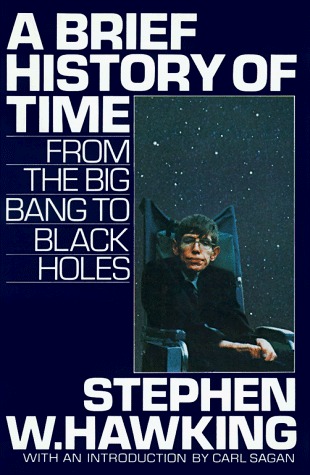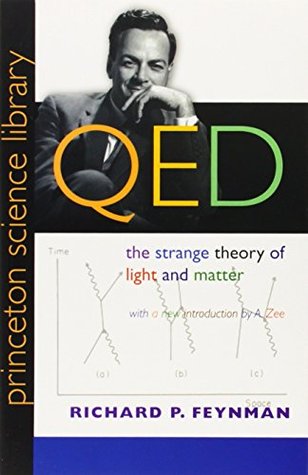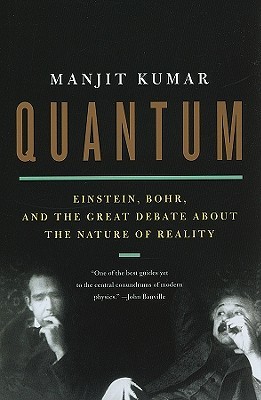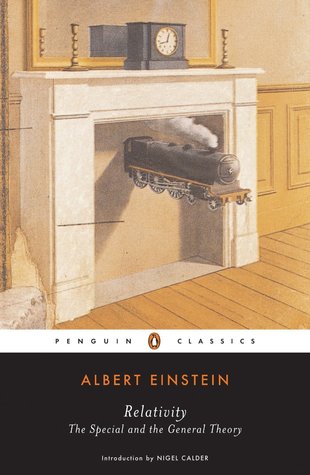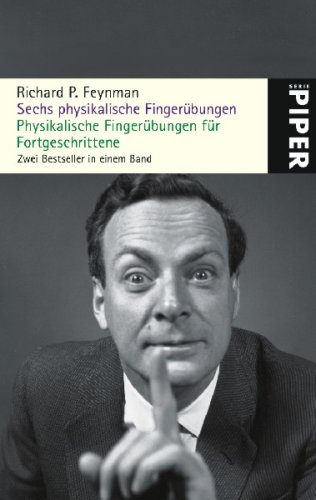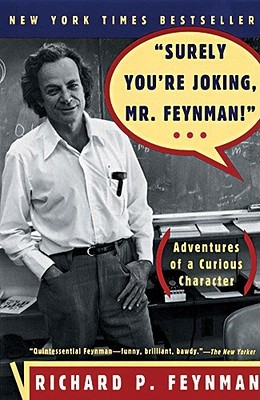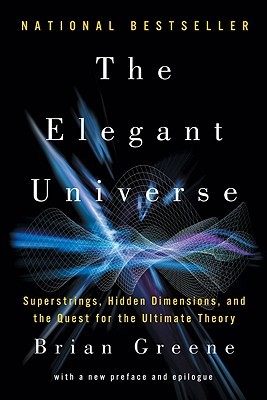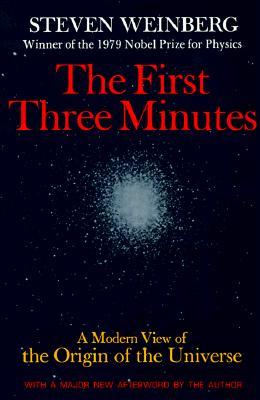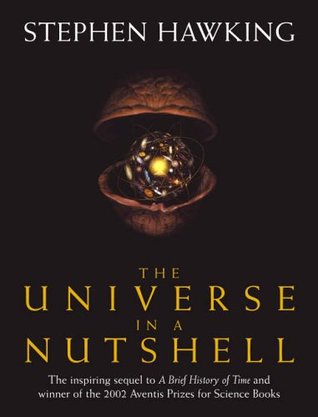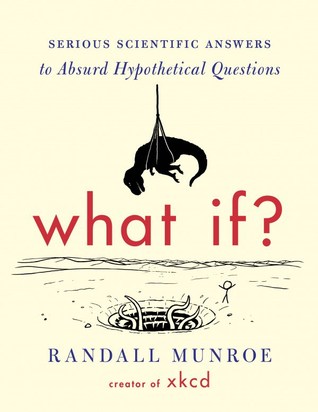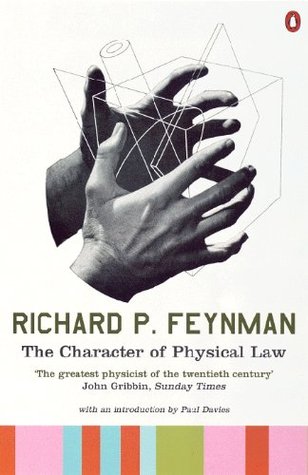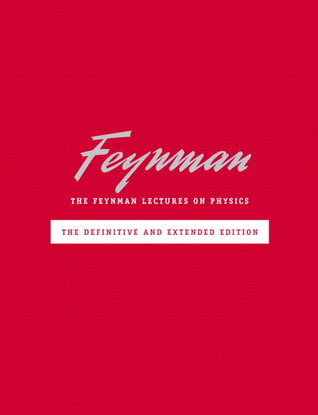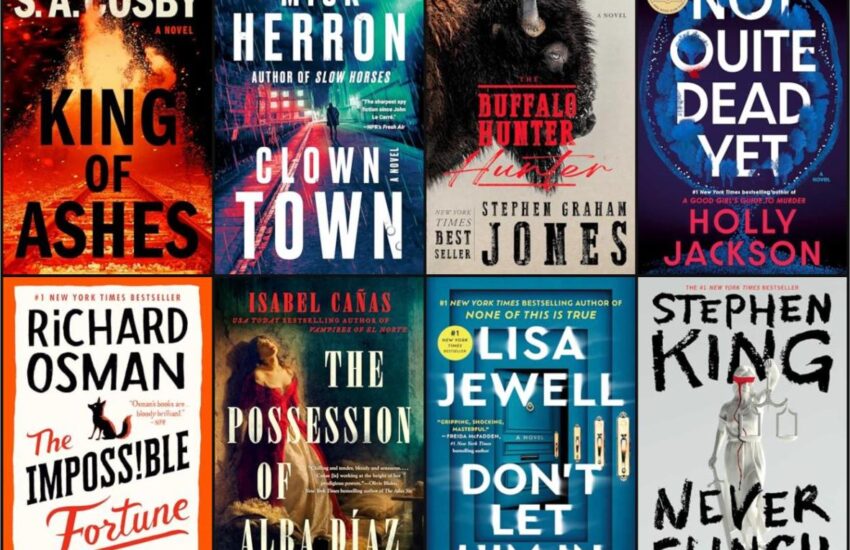The Best Books About Physics
“What are the best books about Physics?” We looked at 350 of the top physics books, aggregating and ranking them so we could answer that very question!
With nearly a years worth of Physics books covering all aspects and interest levels of the subject, there is bound to be something below that peaks your interest. The top 42 books, all appearing on 2 or more lists, are ranked below with images, descriptions, and links to learn more/buy. The remaining 300+ books, as well as the articles we used to create the list, are in alphabetical order at the bottom of the page.
If you are still looking for more books after this list, you can also take a look at our Quantum Mechanics/Physics/Theory list as well!
Happy Scrolling!
Top 42 Physics Books Of All-Time
42 .) A Short History of Nearly Everything by Bill Bryson
Lists It Appears On:
- Goodreads
- The Student Room
In A Walk in the Woods, Bill Bryson trekked the Appalachian Trail—well, most of it. In A Sunburned Country, he confronted some of the most lethal wildlife Australia has to offer. Now, in his biggest book, he confronts his greatest challenge: to understand—and, if possible, answer—the oldest, biggest questions we have posed about the universe and ourselves. Taking as territory everything from the Big Bang to the rise of civilization, Bryson seeks to understand how we got from there being nothing at all to there being us. To that end, he has attached himself to a host of the world’s most advanced (and often obsessed) archaeologists, anthropologists, and mathematicians, travelling to their offices, laboratories, and field camps. He has read (or tried to read) their books, pestered them with questions, apprenticed himself to their powerful minds. A Short History of Nearly Everything is the record of this quest, and it is a sometimes profound, sometimes funny, and always supremely clear and entertaining adventure in the realms of human knowledge, as only Bill Bryson can render it. Science has never been more involving or entertaining.
41 .) Beyond: Our Future in Space by Chris Impey
Lists It Appears On:
- Physics World
- Physics Database
“Human exploration has been an unceasing engine of technological progress, from the first homo sapiens to leave our African cradle to a future in which mankind promises to settle another world. Beyond tells the epic story of humanity leaving home―and how humans will soon thrive in the vast universe beyond the earth.
A dazzling and propulsive voyage through space and time, Beyond reveals how centuries of space explorers―from the earliest stargazers to today’s cutting-edge researchers―all draw inspiration from an innate human emotion: wanderlust. This urge to explore led us to multiply around the globe, and it can be traced in our DNA.
Today, the urge to discover manifests itself in jaw-dropping ways: plans for space elevators poised to replace rockets at a fraction of the cost; experiments in suspending and reanimating life for ultra-long-distance travel; prototypes for solar sails that coast through space on the momentum of microwaves released from the Earth. With these ventures, private companies and entrepreneurs have the potential to outpace NASA as the leaders in a new space race.
Combining expert knowledge of astronomy and avant-garde technology, Chris Impey guides us through the heady possibilities for the next century of exploration. In twenty years, a vibrant commercial space industry will be operating. In thirty years, there will be small but viable colonies on the Moon and Mars. In fifty years, mining technology will have advanced enough to harvest resources from asteroids. In a hundred years, a cohort of humans born off-Earth will come of age without ever visiting humanity’s home planet. This is not the stuff of science fiction but rather the logical extension of already available technologies.”
40 .) Chaos: Making a New Science by James Gleick
Lists It Appears On:
- The Student Room
- Goodreads
A work of popular science in the tradition of Stephen Hawking and Carl Sagan, this 20th-anniversary edition of James Gleick’s groundbreaking bestseller Chaos introduces a whole new readership to chaos theory, one of the most significant waves of scientific knowledge in our time. From Edward Lorenz’s discovery of the Butterfly Effect, to Mitchell Feigenbaum’s calculation of a universal constant, to Benoit Mandelbrot’s concept of fractals, which created a new geometry of nature, Gleick’s engaging narrative focuses on the key figures whose genius converged to chart an innovative direction for science. In Chaos, Gleick makes the story of chaos theory not only fascinating but also accessible to beginners, and opens our eyes to a surprising new view of the universe.
39 .) Elementary Atomic Structure by Gordon K. Woodgate
Lists It Appears On:
- Math
- On Physics Books
38 .) Genius: The Life and Science of Richard Feynman by James Gleick
Lists It Appears On:
- Olympiads
- Goodreads
Raised in Depression-era Rockaway Beach, physicist Richard Feynman was irreverent, eccentric, and childishly enthusiastic—a new kind of scientist in a field that was in its infancy. His quick mastery of quantum mechanics earned him a place at Los Alamos working on the Manhattan Project under J. Robert Oppenheimer, where the giddy young man held his own among the nation’s greatest minds. There, Feynman turned theory into practice, culminating in the Trinity test, on July 16, 1945, when the Atomic Age was born. He was only twenty-seven. And he was just getting started.
37 .) How the Hippies Saved Physics: Science, Counterculture and the Quantum Revival by David Kaiser
Lists It Appears On:
- Forbes
- Institute of Physics
In the 1970s, an eccentric group of physicists in Berkeley, California, banded together to explore the wilder side of science. Dubbing themselves the “Fundamental Fysiks Group,” they pursued an audacious, speculative approach to physics, studying quantum entanglement in terms of Eastern mysticism and psychic mind reading. As David Kaiser reveals, these unlikely heroes spun modern physics in a new direction, forcing mainstream physicists to pay attention to the strange but exciting underpinnings of quantum theory.
36 .) Hyperspace by Michio Kaku
Lists It Appears On:
- Goodreads
- The Student Room
“Are there other dimensions beyond our own? Is time travel possible? Can we change the past? Are there gateways to parallel universes? All of us have pondered such questions, but there was a time when scientists dismissed these notions as outlandish speculations. Not any more. Today, they are the focus of the most intense scientific activity in recent memory. In Hyperspace, Michio Kaku, author of the widely acclaimed Beyond Einstein and a leading theoretical physicist, offers the first book-length tour of the most exciting (and perhaps most bizarre) work in modern physics, work which includes research on the tenth dimension, time warps, black holes, and multiple universes.
The theory of hyperspace (or higher dimensional space)–and its newest wrinkle, superstring theory–stand at the center of this revolution, with adherents in every major research laboratory in the world, including several Nobel laureates. Beginning where Hawking’s Brief History of Time left off, Kaku paints a vivid portrayal of the breakthroughs now rocking the physics establishment. Why all the excitement? As the author points out, for over half a century, scientists have puzzled over why the basic forces of the cosmos–gravity, electromagnetism, and the strong and weak nuclear forces–require markedly different mathematical descriptions. But if we see these forces as vibrations in a higher dimensional space, their field equations suddenly fit together like pieces in a jigsaw puzzle, perfectly snug, in an elegant, astonishingly simple form. This may thus be our leading candidate for the Theory of Everything. If so, it would be the crowning achievement of 2,000 years of scientific investigation into matter and its forces. Already, the theory has inspired several thousand research papers, and has been the focus of over 200 international conferences.”
35 .) In Search of Schrodinger’s Cat by John Gribbin
Lists It Appears On:
- The Student Room
- Goodreads
Quantum theory is so shocking that Einstein could not bring himself to accept it. It is so important that it provides the fundamental underpinning of all modern sciences. Without it, we’d have no nuclear power or nuclear weapons, no TV, no computers, no science of molecular biology, no understanding of DNA, no genetic engineering. In Search of Schrodinger’s Cat tells the complete story of quantum mechanics, a truth stranger than any fiction. John Gribbin takes us step by step into an ever more bizarre and fascinating place, requiring only that we approach it with an open mind. He introduces the scientists who developed quantum theory. He investigates the atom, radiation, time travel, the birth of the universe, superconductors and life itself. And in a world full of its own delights, mysteries and surprises, he searches for Schrodinger’s Cat – a search for quantum reality – as he brings every reader to a clear understanding of the most important area of scientific study today – quantum physics. In Search of Schrodinger’s Cat is a fascinating and delightful introduction to the strange world of the quantum – an essential element in understanding today’s world.
34 .) Introduction to Electrodynamics by David J. Griffiths
Lists It Appears On:
- On Physics Books
- Goodreads
33 .) Introduction to High Energy Physics by Donald H. Perkins
Lists It Appears On:
- Math
- On Physics Books
This highly regarded textbook for advanced undergraduates provides a comprehensive introduction to modern particle physics. Coverage emphasizes the balance between experiment and theory. It places stress on the phenomenological approach and basic theoretical concepts rather than rigorous mathematical detail. Donald Perkins also details recent developments in elementary particle physics, as well as its connections with cosmology and astrophysics. A number of key experiments are also identified along with a description of how they have influenced the field. Perkins presents most of the material in the context of the Standard Model of quarks and leptons. He also fully explores the shortcomings of this model and new physics beyond its compass (such as supersymmetry, neutrino mass and oscillations, GUTs and superstrings). The text includes many problems and a detailed and annotated further reading list.
32 .) Introductory Nuclear Physics by Kenneth S. Krane
Lists It Appears On:
- Math
- SuperProfs
This comprehensive text provides an introduction to basic nuclear physics, including nuclear decays and reactions and nuclear structure, while covering the essential areas of basic research and practical applications. Its emphasis on phenomonology and the results of real experiments distinguish this from all other texts available. Discussions of theory are reinforced with examples which illustrate and apply the theoretical formulism, thus aiding students in their reading and analysis of current literature. The text is designed to provide a core of material for students with minimal background in mathematics or quantum theory and offers more sophisticated material in separate sections.
31 .) Physics for Scientists and Engineers by Raymond A. Serway
Lists It Appears On:
- On Physics Books
- Alibris
Achieve success in your physics course by making the most of what PHYSICS FOR SCIENTISTS AND ENGINEERS has to offer. From a host of in-text features to a range of outstanding technology resources, you’ll have everything you need to understand the natural forces and principles of physics. Throughout every chapter, the authors have built in a wide range of examples, exercises, and illustrations that will help you understand the laws of physics AND succeed in your course!
30 .) Seven Brief Lessons on Physics by Carlo Rovelli
Lists It Appears On:
- Alibris
- Goodreads
This playful, entertaining, and mind-bending introduction to modern physics briskly explains Einstein’s general relativity, quantum mechanics, elementary particles, gravity, black holes, the complex architecture of the universe, and the role humans play in this weird and wonderful world. Carlo Rovelli, a renowned theoretical physicist, is a delightfully poetic and philosophical scientific guide. He takes us to the frontiers of our knowledge: to the most minute reaches of the fabric of space, back to the origins of the cosmos, and into the workings of our minds. The book celebrates the joy of discovery.
29 .) Spacetime Physics by Edwin F. Taylor & John A. Wheeler
Lists It Appears On:
- On Physics Books
- The Student Room
Written by two of the field’s true pioneers, Spacetime Physics can extend and enhance coverage of specialty relativity in the classroom. This thoroughly up-to-date, highly accessible overview covers microgravity, collider accelerators, satellite probes, neutron detectors, radioastronomy, and pulsars. The chapter on general relativity with new material on gravity waves, black holes, and cosmology.
28 .) Special Relativity by Anthony P. French
Lists It Appears On:
- On Physics Books
- The Student Room
“The education Research Center at the Massachusetts Institute of Technology (formerly the Science Teaching Center) was established to study the process of instruction, aids thereto, and the learning process itself, with special reference to science teaching at the university level. Generous support from the National Science Foundation and from the Kettering, Shell, Victoria, W. T. Grant, and Bing Foundations provided the means for assembling and maintaining an experienced staff to cooperate with members of the Institute’s Physics Department in the examination, improvement, and development of physics curriculum materials for students planning a career in the sciences.
After careful analysis of objectives and the problems involved, preliminary versions of textbooks were prepared, tested through classroom use at M.I.T. and other institutions, re-evaluated, rewritten, and tried again. Only then were the final manuscripts undertaken.”
27 .) The Fabric of Reality: The Science of Parallel Universes–and Its Implications by David Deutsch
Lists It Appears On:
- The Student Room
- Goodreads
For David Deutsch, a young physicist of unusual originality, quantum theory contains our most fundamental knowledge of the physical world. Taken literally, it implies that there are many universes “parallel” to the one we see around us. This multiplicity of universes, according to Deutsch, turns out to be the key to achieving a new worldview, one which synthesizes the theories of evolution, computation, and knowledge with quantum physics. Considered jointly, these four strands of explanation reveal a unified fabric of reality that is both objective and comprehensible, the subject of this daring, challenging book. The Fabric of Reality explains and connects many topics at the leading edge of current research and thinking, such as quantum computers (which work by effectively collaborating with their counterparts in other universes), the physics of time travel, the comprehensibility of nature and the physical limits of virtual reality, the significance of human life, and the ultimate fate of the universe. Here, for scientist and layperson alike, for philosopher, science-fiction reader, biologist, and computer expert, is a startlingly complete and rational synthesis of disciplines, and a new, optimistic message about existence.
26 .) The Fabric of the Cosmos: Space, Time, and the Texture of Reality by Brian Greene
Lists It Appears On:
- Goodreads
- Alibris
Space and time form the very fabric of the cosmos. Yet they remain among the most mysterious of concepts. Is space an entity? Why does time have a direction? Could the universe exist without space and time? Can we travel to the past? Greene has set himself a daunting task: to explain non-intuitive, mathematical concepts like String Theory, the Heisenberg Uncertainty Principle, and Inflationary Cosmology with analogies drawn from common experience. From Newton’s unchanging realm in which space and time are absolute, to Einstein’s fluid conception of spacetime, to quantum mechanics’ entangled arena where vastly distant objects can instantaneously coordinate their behavior, Greene takes us all, regardless of our scientific backgrounds, on an irresistible and revelatory journey to the new layers of reality that modern physics has discovered lying just beneath the surface of our everyday world.
25 .) The Flying Circus of Physics by Jearle Walker
Lists It Appears On:
- Math
- Olympiads
“Witness astounding feats of physics
Hurry! Hurry! Come one, come all. Meet a man who can pull two railroad passenger cars with his teeth and a real-life human cannon ball. Come face to face with a dead rattlesnake that still bites. And unlock the secrets to the magician’s bodiless head.
Welcome to Jearl Walker’s Flying Circus of Physics, 2nd Edition, where death-defying stunts, high-flying acrobatics, strange curiosities, and mind-bending illusions are all part of everyday life. You don’t need a ticket; you only need to look to the world around you to uncover these fascinating feats of physics.”
24 .) The God Particle: If the Universe Is the Answer, What Is the Question? by L. Lederman, D. Teresi
Lists It Appears On:
- Math
- Olympiads
At the root of particle physics is an invincible sense of curiosity. Leon Lederman embraces this spirit of inquiry as he moves from the Greeks’ earliest scientific observations to Einstein and beyond to chart this unique arm of scientific study. His survey concludes with the Higgs boson, nicknamed the God Particle, which scientists hypothesize will help unlock the last secrets of the subatomic universe, quarks and all—it’s the dogged pursuit of this almost mystical entity that inspires Lederman’s witty and accessible history.
23 .) The Grand Design by Stephen Hawking
Lists It Appears On:
- Telegraph
- Goodreads
“When and how did the universe begin? Why are we here? What is the nature of reality? Is the apparent “grand design” of our universe evidence of a benevolent creator who set things in motion—or does science offer another explanation? In this startling and lavishly illustrated book, Stephen Hawking and Leonard Mlodinow present the most recent scientific thinking about these and other abiding mysteries of the universe, in nontechnical language marked by brilliance and simplicity.
According to quantum theory, the cosmos does not have just a single existence or history. The authors explain that we ourselves are the product of quantum fluctuations in the early universe, and show how quantum theory predicts the “multiverse”—the idea that ours is just one of many universes that appeared spontaneously out of nothing, each with different laws of nature. They conclude with a riveting assessment of M-theory, an explanation of the laws governing our universe that is currently the only viable candidate for a “theory of everything”: the unified theory that Einstein was looking for, which, if confirmed, would represent the ultimate triumph of human reason.”
22 .) The Pleasure of Finding Things Out by Richard Feynman
Lists It Appears On:
- The Student Room
- Goodreads
The Pleasure of Finding Things Out is a magnificent treasury of the best short works of Richard P. Feynman—from interviews and speeches to lectures and printed articles. A sweeping, wide-ranging collection, it presents an intimate and fascinating view of a life in science-a life like no other. From his ruminations on science in our culture to his Nobel Prize acceptance speech, this book will fascinate anyone interested in the world of ideas.
21 .) The Road to Reality: A Complete Guide to the Laws of the Universe by Roger Penrose
Lists It Appears On:
- Goodreads
- The Student Room
Roger Penrose, one of the most accomplished scientists of our time, presents the only comprehensive and comprehensible account of the physics of the universe. From the very first attempts by the Greeks to grapple with the complexities of our known world to the latest application of infinity in physics, The Road to Reality carefully explores the movement of the smallest atomic particles and reaches into the vastness of intergalactic space. Here, Penrose examines the mathematical foundations of the physical universe, exposing the underlying beauty of physics and giving us one the most important works in modern science writing.
20 .) The Second Creation by Charles Mann and Robert Crease
Lists It Appears On:
- Math
- Forbes
“The Second Creation is a dramatic–and human–chronicle of scientific investigators at the last frontier of knowledge. Robert Crease and Charles Mann take the reader on a fascinating journey in search of “”unification”” (a description of how matter behaves that can apply equally to everything) with brilliant scientists such as Niels Bohr, Max Planck, Albert Einstein, Erwin Schrödinger, Richard Feynman, Murray Gell-Mann, Sheldon Glashow, Steven Weinberg, and many others. They provide the definitive and highly entertaining story of the development of modern physics, and the human story of the physicists who set out to find the “”theory of everything.””
The Second Creation tells the story of some of the most talented and idiosyncratic people in the world–many times in their own words. Crease and Mann conducted hundreds of interviews to capture the thinking and the personalities as well as the science. The authors make this complex subject matter clear and absorbing.”
19 .) Three Roads To Quantum Gravity by Lee Smolin
Lists It Appears On:
- Goodreads
- The Student Room
In Three Roads to Quantum Gravity, Lee Smolin provides an accessible overview of the attempts to build a final “theory of everything.” He explains in simple terms what scientists are talking about when they say the world is made from exotic entities such as loops, strings, and black holes and tells the fascinating stories behind these discoveries: the rivalries, epiphanies, and intrigues he witnessed firsthand.
18 .) Trespassing on Einstein’s Lawn by Amanda Gefter
Lists It Appears On:
- Forbes
- Physics World
“At a Chinese restaurant outside of Philadelphia, a father asks his fifteen-year-old daughter a deceptively simple question: “How would you define nothing?” With that, the girl who once tried to fail geometry as a conscientious objector starts reading up on general relativity and quantum mechanics, as she and her dad embark on a life-altering quest for the answers to the universe’s greatest mysteries.
Before Amanda Gefter became an accomplished science writer, she was a twenty-one-year-old magazine assistant willing to sneak her and her father, Warren, into a conference devoted to their physics hero, John Wheeler. Posing as journalists, Amanda and Warren met Wheeler, who offered them cryptic clues to the nature of reality: The universe is a self-excited circuit, he said. And, The boundary of a boundary is zero. Baffled, Amanda and Warren vowed to decode the phrases—and with them, the enigmas of existence. When we solve all that, they agreed, we’ll write a book.
Trespassing on Einstein’s Lawn is that book, a memoir of the impassioned hunt that takes Amanda and her father from New York to London to Los Alamos. Along the way, they bump up against quirky science and even quirkier personalities, including Leonard Susskind, the former Bronx plumber who invented string theory; Ed Witten, the soft-spoken genius who coined the enigmatic M-theory; even Stephen Hawking.”
17 .) Tunnel Visions: The Rise and Fall of the Superconducting Super Collider by Michael Riordan, Lillian Hoddeson and Adrienne W
Lists It Appears On:
- Physics World
- Symmetry Magazine
“Starting in the 1950s, US physicists dominated the search for elementary particles; aided by the association of this research with national security, they held this position for decades. In an effort to maintain their hegemony and track down the elusive Higgs boson, they convinced President Reagan and Congress to support construction of the multibillion-dollar Superconducting Super Collider project in Texas—the largest basic-science project ever attempted. But after the Cold War ended and the estimated SSC cost surpassed ten billion dollars, Congress terminated the project in October 1993.
Drawing on extensive archival research, contemporaneous press accounts, and over one hundred interviews with scientists, engineers, government officials, and others involved, Tunnel Visions tells the riveting story of the aborted SSC project. The authors examine the complex, interrelated causes for its demise, including problems of large-project management, continuing cost overruns, and lack of foreign contributions. In doing so, they ask whether Big Science has become too large and expensive, including whether academic scientists and their government overseers can effectively manage such an enormous undertaking.”
16 .) What Do You Care What Other People Think? by Richard Feynman
Lists It Appears On:
- Goodreads
- Olympiads
One of the greatest physicists of the twentieth century, Richard Feynman possessed an unquenchable thirst for adventure and an unparalleled ability to tell the stories of his life. “What Do You Care What Other People Think?” is Feynman’s last literary legacy, prepared with his friend and fellow drummer, Ralph Leighton. Among its many tales―some funny, others intensely moving―we meet Feynman’s first wife, Arlene, who taught him of love’s irreducible mystery as she lay dying in a hospital bed while he worked nearby on the atomic bomb at Los Alamos. We are also given a fascinating narrative of the investigation of the space shuttle Challenger’s explosion in 1986, and we relive the moment when Feynman revealed the disaster’s cause by an elegant experiment: dropping a ring of rubber into a glass of cold water and pulling it out, misshapen.
15 .) Why Does E=mc²? by Brian Cox and Jeff Forshaw
Lists It Appears On:
- The Student Room
- Goodreads
“What does E=mc2 actually mean? Dr. Brian Cox and Professor Jeff Forshaw go on a journey to the frontier of twenty-first century science to unpack Einstein’s famous equation. Explaining and simplifying notions of energy, mass, and light—while exploding commonly held misconceptions—they demonstrate how the structure of nature itself is contained within this equation. Along the way, we visit the site of one of the largest scientific experiments ever conducted: the now-famous Large Hadron Collider, a gigantic particle accelerator capable of re-creating conditions that existed fractions of a second after the Big Bang.
A collaboration between one of the youngest professors in the United Kingdom and a distinguished popular physicist, Why Does E=mc2? is one of the most exciting and accessible explanations of the theory of relativity.”
14 .) A Brief History of Time by Stephen Hawking
Lists It Appears On:
- Physics Database
- Goodreads
- The Student Room
“A landmark volume in science writing by one of the great minds of our time, Stephen Hawking’s book explores such profound questions as: How did the universe begin—and what made its start possible? Does time always flow forward? Is the universe unending—or are there boundaries? Are there other dimensions in space? What will happen when it all ends?
Told in language we all can understand, A Brief History of Time plunges into the exotic realms of black holes and quarks, of antimatter and “arrows of time,” of the big bang and a bigger God—where the possibilities are wondrous and unexpected. With exciting images and profound imagination, Stephen Hawking brings us closer to the ultimate secrets at the very heart of creation.”
13 .) QED: The Strange Theory of Light and Matter by Richard Feynman
Lists It Appears On:
- Forbes
- The Student Room
- Goodreads
Celebrated for his brilliantly quirky insights into the physical world, Nobel laureate Richard Feynman also possessed an extraordinary talent for explaining difficult concepts to the general public. Here Feynman provides a classic and definitive introduction to QED (namely, quantum electrodynamics), that part of quantum field theory describing the interactions of light with charged particles. Using everyday language, spatial concepts, visualizations, and his renowned “Feynman diagrams” instead of advanced mathematics, Feynman clearly and humorously communicates both the substance and spirit of QED to the layperson. A. Zee’s introduction places Feynman’s book and his seminal contribution to QED in historical context and further highlights Feynman’s uniquely appealing and illuminating style.
12 .) Quantum by Manjit Kumar
Lists It Appears On:
- Telegraph
- The Student Room
- Goodreads
Quantum theory is weird. As Niels Bohr said, if you weren’t shocked by quantum theory, you didn’t really understand it. For most people, quantum theory is synonymous with mysterious, impenetrable science. And in fact for many years it was equally baffling for scientists themselves. In this tour de force of science history, Manjit Kumar gives a dramatic and superbly written account of this fundamental scientific revolution, focusing on the central conflict between Einstein and Bohr over the nature of reality and the soul of science. This revelatory book takes a close look at the golden age of physics, the brilliant young minds at its core—and how an idea ignited the greatest intellectual debate of the twentieth century.
11 .) Relativity: The Special and the General Theory by Albert Einstein
Lists It Appears On:
- The Student Room
- Symmetry Magazine
- Goodreads
World-renowned theoretical physicist Albert Einstein was interested in explaining the theory of Relativity to people who were not especially well-versed in higher mathematic concepts and theoretical physics. His solution to this was to write the ground-breaking work, “Relativity: The Special and General Theory.” In the paper, Einstein lays out two contradictory principles: a principle of relativity and a principle of light. Einstein proposed that, rather than discarding these two principles for being conflicting, the rules of time and space should be completely revamped and rethought in order to find a way to make these two principles work in harmony. Rather than just explaining his new proposal, though, Einstein writes exactly why these rules need to be changed by explaining the inaccuracies and inadequacies located within each of the current theories. Albert Einstein is best known for his work on the theory of Relativity, gaining him the title of “Father of Modern Physics.” He also received the 1921 Nobel Prize in Physics, and his work is attributed as an inspiration for the quantum theory within the field of physics. After immigrating to America following Adolf Hitler’s rise to power in Germany, Einstein famously warned the government that Hitler was planning on creating a weapon based on nuclear fission, and voiced his strong opinion against the creation of the atom bomb. His hundreds of papers and books are highly original and intelligent, making him one of the most famous and respected intellectual minds of the twentieth century.
10 .) Six Easy Pieces/Six Not So Easy Pieces by Richard Feynman
Lists It Appears On:
- Goodreads
- The Student Room
- Goodreads
“It was Feynman’s outrageous and scintillating method of teaching that earned him legendary status among students and professors of physics. From 1961 to 1963, Feynman delivered a series of lectures at the California Institute of Technology that revolutionized the teaching of physics. In Six Not-So-Easy Pieces, taken from these famous lectures, Feynman delves into one of the most revolutionary discoveries in twentieth-century physics: Einstein’s theory of relativity. The idea that the flow of time is not constant, that the mass of an object depends on its velocity, and that the speed of light is a constant no matter what the motion of the observer, at first seemed shocking to scientists and laymen alike. But as Feynman shows, these tricky ideas are not merely dry principles of physics, but things of beauty and elegance.
No one—not even Einstein himself—explained these difficult, anti-intuitive concepts more clearly, or with more verve and gusto, than Richard Feynman. Filled with wonderful examples and clever illustrations, Six Not-So-Easy Pieces is the ideal introduction to fundamentals of physics by one of the most admired and accessible physicists of all times.”
9 .) Surely You’re Joking, Mr. Feynman!: Adventures of a Curious Character by Richard Feynman
Lists It Appears On:
- The Student Room
- Goodreads
- Olympiads
Richard Feynman, winner of the Nobel Prize in physics, thrived on outrageous adventures. Here he recounts in his inimitable voice his experience trading ideas on atomic physics with Einstein and Bohr and ideas on gambling with Nick the Greek; cracking the uncrackable safes guarding the most deeply held nuclear secrets; accompanying a ballet on his bongo drums; painting a naked female toreador. In short, here is Feynman’s life in all its eccentric―a combustible mixture of high intelligence, unlimited curiosity, and raging chutzpah.
8 .) The Elegant Universe: Superstrings, Hidden Dimensions, and the Quest for the Ultimate Theory by Brian Greene
Lists It Appears On:
- The Student Room
- Goodreads
- Alibris
Brian Greene, one of the world’s leading string theorists, peels away layers of mystery to reveal a universe that consists of eleven dimensions, where the fabric of space tears and repairs itself, and all matter―from the smallest quarks to the most gargantuan supernovas―is generated by the vibrations of microscopically tiny loops of energy. The Elegant Universe makes some of the most sophisticated concepts ever contemplated accessible and thoroughly entertaining, bringing us closer than ever to understanding how the universe works.
7 .) The First Three Minutes by Steven Weinberg
Lists It Appears On:
- The Student Room
- Susan J Fowler
- Goodreads
This classic of contemporary science writing by a Nobel Prize-winning physicist explains to general readers what happened when the universe began, and how we know.
6 .) The Universe in a Nutshell by Stephen Hawking
Lists It Appears On:
- Physics Central
- Goodreads
- The Student Room
“One of the most influential thinkers of our time, Stephen Hawking is an intellectual icon, known not only for the adventurousness of his ideas but for the clarity and wit with which he expresses them. In this new book Hawking takes us to the cutting edge of theoretical physics, where truth is often stranger than fiction, to explain in laymen’s terms the principles that control our universe.
Like many in the community of theoretical physicists, Professor Hawking is seeking to uncover the grail of science — the elusive Theory of Everything that lies at the heart of the cosmos. In his accessible and often playful style, he guides us on his search to uncover the secrets of the universe — from supergravity to supersymmetry, from quantum theory to M-theory, from holography to duality.
He takes us to the wild frontiers of science, where superstring theory and p-branes may hold the final clue to the puzzle. And he lets us behind the scenes of one of his most exciting intellectual adventures as he seeks “to combine Einstein’s General Theory of Relativity and Richard Feynman’s idea of multiple histories into one complete unified theory that will describe everything that happens in the universe.””
5 .) What If?: Serious Scientific Answers to Absurd Hypothetical Questions by Randall Munroe
Lists It Appears On:
- Physics Database
- Goodreads
- Alibris
“Millions of people visit xkcd.com each week to read Randall Munroe’s iconic webcomic. His stick-figure drawings about science, technology, language, and love have a large and passionate following.
Fans of xkcd ask Munroe a lot of strange questions. What if you tried to hit a baseball pitched at 90 percent the speed of light? How fast can you hit a speed bump while driving and live? If there was a robot apocalypse, how long would humanity last?
In pursuit of answers, Munroe runs computer simulations, pores over stacks of declassified military research memos, solves differential equations, and consults with nuclear reactor operators. His responses are masterpieces of clarity and hilarity, complemented by signature xkcd comics. They often predict the complete annihilation of humankind, or at least a really big explosion.”
4 .) The Character of Physical Law by Richard Feynman
Lists It Appears On:
- Math
- Goodreads
- Susan J Fowler
- Olympiads
“Richard Feynman was one of the most famous and important physicists of the second half of the twentieth century. Awarded the Nobel Prize for Physics in 1965, celebrated for his spirited and engaging lectures, and briefly a star on the evening news for his presence on the commission investigating the explosion of the space shuttle Challenger, Feynman is best known for his contributions to the field of quantum electrodynamics. The Character of Physical Law, drawn from Feynman’s famous 1964 series of Messenger Lectures at Cornell, offers an introduction to modern physics — and to Feynman at his witty and enthusiastic best.
In this classic book (originally published in 1967), Feynman offers an overview of selected physical laws and gathers their common features, arguing that the importance of a physical law is not “”how clever we are to have found it out”” but “”how clever nature is to pay attention to it.”” He discusses such topics as the interaction of mathematics and physics, the principle of conservation, the puzzle of symmetry, and the process of scientific discovery. A foreword by 2004 Physics Nobel laureate Frank Wilczek updates some of Feynman’s observations — noting, however, “”the need for these particular updates enhances rather than detracts from the book.”” In The Character of Physical Law, Feynman chose to grapple with issues at the forefront of physics that seemed unresolved, important, and approachable.”
3 .) Introduction to Quantum Mechanics by David J. Griffiths
Lists It Appears On:
- On Physics Books
- SuperProfs
- Goodreads
- Alibris
This bestselling undergraduate quantum mechanics textbook is now available in a re-issued, affordable edition from Cambridge University Press. The text first teaches students how to do quantum mechanics, and then provides them with a more insightful discussion of what it means. The author avoids the temptation to include every possible relevant topic, instead presenting students with material that they can easily focus on in a complete treatment with few distractions and diversions. Fundamental principles are covered, quantum theory is presented, and special techniques are developed for attacking realistic problems. The innovative two-part coverage is entertaining and informative, organizing topics under basic theory and assembling an arsenal of approximation schemes with illustrative applications linked closely to the text.
2 .) Fundamentals of Physics by David Halliday
Lists It Appears On:
- Alibris
- On Physics Books
- Careers 360
- Goodreads
The 10th edition of Halliday, Resnick and Walkers Fundamentals of Physics provides the perfect solution for teaching a 2 or 3 semester calculus-based physics course, providing instructors with a tool by which they can teach students how to effectively read scientific material, identify fundamental concepts, reason through scientific questions, and solve quantitative problems. The 10th edition builds upon previous editions by offering new features designed to better engage students and support critical thinking. These include NEW Video Illustrations that bring the subject matter to life, NEW Vector Drawing Questions that test students conceptual understanding, and additional multimedia resources (videos and animations) that provide an alternative pathway through the material for those who struggle with reading scientific exposition.
1 .) The Feynman Lectures on Physics by Richard Feynman
Lists It Appears On:
- Olympiads
- Math
- Goodreads
- Susan J Fowler
“The whole thing was basically an experiment,” Richard Feynman said late in his career, looking back on the origins of his lectures. The experiment turned out to be hugely successful, spawning a book that has remained a definitive introduction to physics for decades. Ranging from the most basic principles of Newtonian physics through such formidable theories as general relativity and quantum mechanics, Feynman’s lectures stand as a monument of clear exposition and deep insight. Now, we are reintroducing the printed books to the trade, fully corrected, for the first time ever, and in collaboration with Caltech. Timeless and collectible, the lectures are essential reading, not just for students of physics but for anyone seeking an introduction to the field from the inimitable Feynman.
The Best Additional Best Physics Books
| # | Book | Author | Lists |
| (Books Appear On 1 List Each) | |||
| 43 | 3000 Solved Problems in Physics | Alvin Halpern | SuperProfs |
| 44 | A Course of Mathematics for Students of Physics | Bamberg and S. Sternberg | Math |
| 45 | A Deepness in the Sky | To Be Read | |
| 46 | A Hole at the Bottom of the Sea: The Race to Kill the BP Oil Gusher | Joel Achenbach | Institute of Physics |
| 47 | A Laboratory Manual for Introductory Physics | Donald E. Simanek | Science Books Online |
| 48 | A Level Physics | Roger Muncaster | The Student Room |
| 49 | A panorama of pure mathematics, as seen by N. Bourbaki, translated by I.G. Macdonald | Jean Dieudonne | Math |
| 50 | A problem book in Mathematical analysis | G.N. Berman | Careers 360 |
| 51 | A Universe from Nothing: Why There Is Something Rather Than Nothing | Lawrence M. Krauss | Goodreads |
| 52 | Accessible Physics | Azzopardi and Stewart | The Student Room |
| 53 | Advanced Engineering Mathematics | h K Dass | SuperProfs |
| 54 | Advanced Engineering Mathematics – ISV | Erwin Kreyszig | SuperProfs |
| 55 | Advanced Exercises in Practical Physics | Arthur Schuster | Science Books Online |
| 56 | Advanced level Physics | Nelson and Parker | Careers 360 |
| 57 | Advanced Physics | Oxford University Press. | The Student Room |
| 58 | Algebra made easy | K.P.Basu | Careers 360 |
| 59 | An Astronauts Guide to Life on Earth | Physics Database | |
| 60 | An Einstein Encyclopedia | Alice Calaprice, Daniel Kennefick and Robert Schulmann | Symmetry Magazine |
| 61 | An Introduction to Error Analysis | John R. Taylor | On Physics Books |
| 62 | An Introduction to Mechanics (SIE) | David Kleppner and Robert Kolenkow | SuperProfs |
| 63 | An Introduction to Physical… | James T Shipman | Alibris |
| 64 | Analysis, manifolds, and physics (2 volumes) | Yvonne Choquet-Bruhat, Cecile DeWitt-Morette, and Margaret Dillard-Bleick | Math |
| 65 | Arihant Chemistry | Careers 360 | |
| 66 | Arihant Mathematics | Careers 360 | |
| 67 | Arihant Physics | D. C. Pandey | Careers 360 |
| 68 | Atmospheric Convection | David J. Raymond | Science Books Online |
| 69 | Atomic and laser spectroscopy | Alan Corney | Math |
| 70 | Atomic and Molecular Physics | Raj Kumar | SuperProfs |
| 71 | Atomic Physics | Max Born | Math |
| 72 | Atomic Physics (Modern Physics) | S.N. Ghoshal | SuperProfs |
| 73 | Atomic spectra and atomic structure | Gerhard Herzberg | Math |
| 74 | Atoms Under the Floorboards: the Surprising Science Hidden in Your Home | Chris Woodford | Physics World |
| 75 | Barron’s SAT Subject Test: Physics | Greg Young and Robert Jansen | Physics Database |
| 76 | Big Bang: The Origin of the Universe | Simon Singh | Goodreads |
| 77 | Biocentrism: How Life and… | Bob Berman, Lanza MD Robert | Alibris |
| 78 | Black Hole: And Other Cosmic Quandaries | Goodreads | |
| 79 | Black Hole: How an Idea Abandoned by Newtonians, Hated by Einstein and Gambled on by Hawking Became Loved | Marcia Bartusiak | Symmetry Magazine |
| 80 | Black Holes and Ba | Stephen Hawking | Goodreads |
| 81 | Blackholes and Timewarps: Einstein’s Outrageous Legacy | Kip Thorne | The Student Room |
| 82 | Boojums all the way through | David Mermin | Math |
| 83 | Braid group, Knot Theory & Statistical Mechanics. | C. Yang and M. Ge | Math |
| 84 | Broken Symmetries | Paul Preuss | To Be Read |
| 85 | C-algebras and their applications to Statistical Mechanics and Quantum Field Theory. | D. Kastler | Math |
| 86 | Calculus and analytic geometry | Thomas and Finney | Careers 360 |
| 87 | Chaos: Classical and Quantum | Predrag Cvitanovic | Science Books Online |
| 88 | Chapterwise GATE Physics Solved Papers (2014-2000) | Arihant Publications | SuperProfs |
| 89 | China and Albert Einstein: The Reception of the Physicist and His Theory in China, 1917–1979 | Danian Hu | Physics Today |
| 90 | Classic Feynman ed | Ralph Leighton | Physics Central |
| 91 | Classical Dynamics of Particles and Systems | Jerry B. Marion | On Physics Books |
| 92 | CLASSICAL MECHANICS | Narayan Rana and Pramod Joag | SuperProfs |
| 93 | Classical Mechanics | Herbert Goldstein | SuperProfs |
| 94 | Classical Mechanics | Aruldhas | SuperProfs |
| 95 | College Physics | Raymond A Serway | Alibris |
| 96 | College Physics | Jerry D Wilson | Alibris |
| 97 | Computational Physics | Angus MacKinnon | Science Books Online |
| 98 | Computational Physics | Konstantinos Anagnostopoulos | Science Books Online |
| 99 | Computational Physics | Matthias Troyer | Science Books Online |
| 100 | Computational Physics | Morten Hjorth-Jensen | Science Books Online |
| 101 | Computational Physics With Python | Eric Ayars | Science Books Online |
| 102 | Computational Physics with Python | Mark Newman | Science Books Online |
| 103 | Computational Physics: Problem Solving with Computers | Rubin H Landau | Science Books Online |
| 104 | Computer simulation methods in chemistry and physics | Ard Louis | Science Books Online |
| 105 | Concepts of Modern Physics | Arthur Beiser | On Physics Books |
| 106 | Concepts of Physics | H.C. Verma | Careers 360 |
| 107 | Conceptual Physics | Paul G Hewitt | Alibris |
| 108 | Concise Inorganic Chemistry | J.D. Lee | Careers 360 |
| 109 | Coordinate geometry | S. L. Loney | Careers 360 |
| 110 | Cosmos | Carl Sagan | Goodreads |
| 111 | Dance of the Photons | Anton Zeilinger | Forbes |
| 112 | Dancing Wu Li Masters: An Overview of the New Physics | Gary Zukav | Goodreads |
| 113 | Dark Matter and Dinosaurs: The Astounding Interconnectedness of the Universe | Lisa Randall | Symmetry Magazine |
| 114 | Data Reduction and Error Analysis for the Physical Sciences | P.R. Bevington & D.K. Robinson | On Physics Books |
| 115 | Death | Neil deGrasse Tyson | Goodreads |
| 116 | Deep Down Things: The Breathtaking Beauty of Particle Physics | Bruce Schumm | Susan J Fowler |
| 117 | Digital Logic and Computer Design | M. Morris Mano | SuperProfs |
| 118 | Direct Nuclear Reactions | Satchler | Math |
| 119 | Does God Play Dice? | Ian Stewart | The Student Room |
| 120 | Drawing Theories Apart: The Dispersion of Feynman Diagrams in Postwar Physics | David Kaiser | Physics Today |
| 121 | Dynamic System Modeling and Control | Hugh Jack | Science Books Online |
| 122 | Einstein: His Life and Universe | Walter Isaacson | Physics Database |
| 123 | Einstein’s Dice and Schrodinger’s Cat: How Two Great Minds Battled Quantum Randomness to Create a Unified Theory | Paul Halpern | Symmetry Magazine |
| 124 | Electromagnetic Field Theory | S Ghosh and Lipika Datta | SuperProfs |
| 125 | Electromagnetic Waves and Radiating Systems | Jordan and Balmain | SuperProfs |
| 126 | Electromagnetics (Schaum’s Outline Series) | Joseph Edminister and Vishnu Priye | SuperProfs |
| 127 | Electronic Devices and Circuit Theory | Robert L. Boylestad | SuperProfs |
| 128 | Elementary Solid State Physics | M. Ali Omar | SuperProfs |
| 129 | Elements of Dynamics | S.L.Loney | Careers 360 |
| 130 | Engineering Electromagnetics (SIE) | William Hayt and John Buck | SuperProfs |
| 131 | Epidemiology 101 | Robert H Friis | Alibris |
| 132 | Erwin Schrödinger and the Quantum Revolution | John Gribbin | Institute of Physics |
| 133 | Feynman Lectures In Physics (Vol I | III) | The Student Room |
| 134 | Fizz: Nothing is as it seems | Zvi Schreiber | The Student Room |
| 135 | From Eternity to Here: The Quest for the Ultimate Theory of Time | Sean Carroll | Goodreads |
| 136 | Fundamentals for Molecular Spectroscopy | Colin Banwell and Elaine Mccash | SuperProfs |
| 137 | Fundamentals of Digital Circuits | A. Anand Kumar | SuperProfs |
| 138 | Fundamentals of Electric Circuits | Charles K. Alexander | SuperProfs |
| 139 | Fundamentals Of Statistical And Thermal Physics | REIF | SuperProfs |
| 140 | GATE engineering & Mathematics General Apptitude | G.K. Publications | SuperProfs |
| 141 | GATE Engineering Mathematics | Nodia and Company | SuperProfs |
| 142 | Gate Guide Physics | G K Publications | SuperProfs |
| 143 | GATE Physics Solved Papers | Upkar Publications | SuperProfs |
| 144 | Gate solved Paper Physics: SOLVED Papers 2000 – 2015 | G K Publications | SuperProfs |
| 145 | GATE-2017 : Verbal and Numerical Ability Solved Papers | Made Easy Team | SuperProfs |
| 146 | GATE-2017: Engineering Mathematics Solved Papers | Made Easy Publications | SuperProfs |
| 147 | General Aptitude: Quantitative Aptitude & Reasoning | GK Publications | SuperProfs |
| 148 | General Chemistry | Ebbing | Careers 360 |
| 149 | Great Physicists | William H. Cropper | The Student Room |
| 150 | Half-Life: the Divided Life of Bruno Pontecorvo, Physicist or Spy | Frank Close | Physics World |
| 151 | Hidden Unity in Nature’s Laws | John C. Taylor | The Student Room |
| 152 | High school mathematics | Hall and Knight | Careers 360 |
| 153 | Higher Algebra | Bernard and Child | Careers 360 |
| 154 | Higher Engineering Mathematics | B.S. Grewal | SuperProfs |
| 155 | Higher Engineering Mathematics | Bandaru Ramana | SuperProfs |
| 156 | Hitchhiker’s Guide to First Year Physics Labs at UCD | Philip Ilten | Science Books Online |
| 157 | How Not to Be Wrong: The… | Jordan Ellenberg | Alibris |
| 158 | How to Lie with Statistics? | Physics Database | |
| 159 | How to teach Quantum Physics to your dog | Chad Orzel | The Student Room |
| 160 | How to Teach Relativity to Your Dog | Chad Orzel | Institute of Physics |
| 161 | IIT Chemistry | O.P. Agarwal | Careers 360 |
| 162 | In Search of the Big Bang | John Gribbin | The Student Room |
| 163 | In Search of the Multiverse | John Gribbin | Telegraph |
| 164 | Integrated Electronics : Analog And Digital Circuits | Jacob Millman, Christos Halkias, Chetan Parikh | SuperProfs |
| 165 | International Physics Olympiads: Problems and Solutions from 1967 – 1995. | Chaleo Manilerd (ed.) | Olympiads |
| 166 | International Physics Olympiads. | Waldemar Gorzkowski (ed.) | Olympiads |
| 167 | Introduction to Atomic Spectra | Harvey Elliott White | SuperProfs |
| 168 | Introduction to Classical Mechanics | Takwale, R and Puranik | SuperProfs |
| 169 | Introduction to Computational Physics | Franz J. Vesely | Science Books Online |
| 170 | Introduction to Computational Physics | Richard Fitzpatrick | Science Books Online |
| 171 | Introduction to Mathematical Physics | S Chandra and M K Sharma | SuperProfs |
| 172 | Introduction to Mathematical Physics | Michael T. Vaughan | SuperProfs |
| 173 | Introduction to Nuclear and Particle Physics | Verma V.K | SuperProfs |
| 174 | Introduction to protein folding for physicists | Pablo Echenique | Science Books Online |
| 175 | Introduction to Solid State Physics | Charles Kittel | SuperProfs |
| 176 | Inward Bound | A Pais | Math |
| 177 | Just Six Numbers | Martin Rees | The Student Room |
| 178 | Kepler and the Universe: How One Man Revolutionized Astronomy | David K | Symmetry Magazine |
| 179 | Knots and Physics, World Scientific, Singapore | L. Kauffman | Math |
| 180 | Laboratory projects in physics: a manual of practical experiments for beginners | Frederick Foreman Good | Science Books Online |
| 181 | Lecture Notes on Elementary Topology and Geometry | Singer, Thorpe | Math |
| 182 | Lectures in Theoretical Biophysics | K. Schulten and I. Kosztin | Science Books Online |
| 183 | Lectures on Theoretical Physics | Arnold Sommerfeld | Math |
| 184 | Leptons and quarks, translated from Russian | L. B. Okun | Math |
| 185 | Leviathan and the Air-Pump: Hobbes, Boyle, and the Experimental Life | Steven Shapin and Simon Schaffer | Physics Today |
| 186 | Lie Groups for Particle Phyiscs Addison Wesley Frontiers in Physics Series. | Howard Georgi | Math |
| 187 | Lie groups for physicists | Robert Hermann | Math |
| 188 | Life Atomic: A History of Radioisotopes in Science and Medicine | Angela N. H. Creager | Physics Today |
| 189 | Life on the Edge: the Coming of Age of Quantum Biology | Jim Al-Khalili and Johnjoe McFadden | Physics World |
| 190 | Life’s Ratchet: How Molecular Machines Extract Order from Chaos | Peter Hoffmann | Institute of Physics |
| 191 | Light and Color in the Outdoors. | Marcel Minnaert. | Olympiads |
| 192 | Longing for the Harmonies | Frank Wilczek and Betsy Devine | Math |
| 193 | Manifolds, Tensor Analysis and Applications. | Abraham, Marsden & Ratiu | Math |
| 194 | Masters of Theory: Cambridge and the Rise of Mathematical Physics | Andrew Warwick | Physics Today |
| 195 | Mathematical Methods for Physics and Engineering (South Asian Edition) | Riley | SuperProfs |
| 196 | Mathematical Physics | H. K. Dass | SuperProfs |
| 197 | Mathematical Physics | B.D. Gupta | SuperProfs |
| 198 | Mathematics | R.S. Agarwal | Careers 360 |
| 199 | Matter’s End | Gregory Benford | To Be Read |
| 200 | Methods of Mathematical Physics | Courant and Hilbert | Math |
| 201 | Microelectronic Circuits | Sedra, Smith, Chandorkar | SuperProfs |
| 202 | Modelling Rationality… and Beyond the Physics | Gh. C. Dinulescu-Campina | Science Books Online |
| 203 | Modern Quantum Mechanics: Pnie | J.J. Sakurai | SuperProfs |
| 204 | Monsters: the Hindenburg Disaster and the Birth of Pathological Technology | Ed Regis | Physics World |
| 205 | NCERT Chemistry | Careers 360 | |
| 206 | NCERT Maths | Careers 360 | |
| 207 | NCERT Physics | Careers 360 | |
| 208 | Network Analysis and Synthesis | S.K. Bhattacharya | SuperProfs |
| 209 | Neutrosophic Physics: More Problems, More Solutions | F. Smarandache | Science Books Online |
| 210 | New Pattern Mathematics fot IIT JEE | M.L. Khanna | Careers 360 |
| 211 | Nuclear And Particle Physics | Suresh Chandra & Mohit K. Sharma | SuperProfs |
| 212 | Nuclear and Particle Physics | S.L. Kakani | SuperProfs |
| 213 | Nuclear Physics | S.N. Ghoshal | SuperProfs |
| 214 | Numerical Chemistry | R. C. Mukerjee | Careers 360 |
| 215 | Numerical Chemistry | P.Bahadur | Careers 360 |
| 216 | Objective English for Competitive Examination 5th Ed. | Hari Mohan Prasad | SuperProfs |
| 217 | Op – Amps and Linear Integrated Circuits | Gayakwad | SuperProfs |
| 218 | Organic Chemistry | Morrison & Boyd | Careers 360 |
| 219 | Organic Chemistry | Francis Carey (TMH) | Careers 360 |
| 220 | Our Mathematical Universe: My Quest for the Ultimate Nature of Reality | Max Tegmark | Goodreads |
| 221 | Pacific Physics | The Student Room | |
| 222 | Parallel Worlds: A Journey Through Creation, Higher Dimensions, and the Future of the Cosmos | Michio Kaku | Goodreads |
| 223 | Particle Physics | Itzykson | Math |
| 224 | Particle physics and introduction to field theory. | T. D. Lee | Math |
| 225 | Permutation City | Greg Egan | Math |
| 226 | Physical Chemistry | P.W.Atkins | Careers 360 |
| 227 | Physics | Walker | Alibris |
| 228 | Physics | John D. Cutnell | Alibris |
| 229 | Physics and Philosophy: The Revolution in Modern Science | Werner Heisenberg | Goodreads |
| 230 | Physics for Scientists and Engineers | Paul A. Tipler | On Physics Books |
| 231 | Physics for Scientists and… | Randall Dewey Knight | Alibris |
| 232 | Physics of Atoms and Molecules | B.H. Bransden | SuperProfs |
| 233 | Physics of the Future: How Science Will Shape Human Destiny and Our Daily Lives | Michio Kaku | Goodreads |
| 234 | Physics of the Impossible: A Scientific Exploration into the World of Phasers, Force Fields, Teleportation, and Time Travel | Michio Kaku | Goodreads |
| 235 | Physics on the Fringe: Smoke Rings, Circlons, and Alternative Theories of Everything | Margaret Wertheim | Institute of Physics |
| 236 | Physics on Your Feet: Ninety Minutes of Shame but a PhD for the Rest of Your Life | Dmitry Budker and Alexander Sushkov | Physics World |
| 237 | Physics: Principles with… | Douglas C Giancoli | Alibris |
| 238 | Plane Trigonometry | S.L. Loney | Careers 360 |
| 239 | Pricing the Future: Finance, Physics and the 300-Year Journey to the Black-Scholes Equation | George Szpiro | Institute of Physics |
| 240 | Principles of Electromagnetics | Mathew N.O. Sadiku | SuperProfs |
| 241 | Principles of Quantum Mechanics | R. Shankar | SuperProfs |
| 242 | Problems in Atomic and Molecular Physics | D K Dhawan | SuperProfs |
| 243 | Problems in calculus of one variable | I.A. Maron | Careers 360 |
| 244 | Problems in General Physics | I.E. Irodov | Careers 360 |
| 245 | Proceedings of the XX International Physics Olympiad, Warsaw, 16-24 July, 1989. | Waldemar Gorzkowski (ed.) | Olympiads |
| 246 | Project Orion: The True Story of the Atomic Spaceship | George Dyson | Physics Central |
| 247 | Quantization in Astrophysics, Brownian Motion, and Supersymmetry | F. Smarandache | Science Books Online |
| 248 | Quantum Enigma: Physics Encounters Consciousness | Bruce Rosenblum and Fred Kuttner | Forbes |
| 249 | Quantum Field Theory | Mandl, Shaw | Math |
| 250 | Quantum Mechanics | Aruldhas G | SuperProfs |
| 251 | Quantum Mechanics : Concepts and Applications | NOUREDINE ZETTILI | SuperProfs |
| 252 | Quantum mechanics from the point of view of the theory of group representations | George Mackey | Math |
| 253 | Quantum Mechanics: The Theoretical Minimum | Leonard Susskind and Art Friedman | Forbes |
| 254 | Quantum Physics of Atoms, Molecules, Solids, Nuclei, and Particles | R.M. Eisberg & R. Resnick | On Physics Books |
| 255 | Quantum Theory Cannot Hurt You | Marcus Chown | The Student Room |
| 256 | Quarks & Leptons, | Francis Halzen & Alan D. Martin | Math |
| 257 | Quarks, leptons & gauge fields | Kerson Huang | Math |
| 258 | Reaction mechanism in Organic Chemistry | Parmar and Chawla | Careers 360 |
| 259 | Reality is Not What it Seems:… | Carlo Rovelli | Alibris |
| 260 | Relativistic Quantum Mechanics | Bjorken & Drell | Math |
| 261 | Relativistic Quantum Mechanics and Field Theory | F.Gross | Math |
| 262 | Resplendent | Stephen Baxter | To Be Read |
| 263 | Rocheworld | To Be Read | |
| 264 | Schrodinger’s Kittens | John Gribbin | The Student Room |
| 265 | Semiconductor Physics and Devices (SIE) | Donald Neamen, Dhrubes Biswas | SuperProfs |
| 266 | Solid State Physics | N. David | SuperProfs |
| 267 | Solid State Physics | R.K. Puri | SuperProfs |
| 268 | Solid State Physics: Structure and Properties of Materials | M. A. Wahab | SuperProfs |
| 269 | Spaceship Neutrino | Christine Sutton | Math |
| 270 | Spider Star | To Be Read | |
| 271 | Spooky Action at a Distance: The Phenomenon That Reimagines Space and Time—and What It Means for Black Holes, the Big Bang, and Theories of Everything | George Musser | Symmetry Magazine |
| 272 | Star Dragon | To Be Read | |
| 273 | Statistical and Thermal Physics: An Introduction | Lokanathan | SuperProfs |
| 274 | Statistical and Thermal Physics: An Introduction | Michael J.R. Hoch | SuperProfs |
| 275 | Statistical Mechanics | Kerson Huang | SuperProfs |
| 276 | Statistical Mechanics: International Series of Monographs in Natural Philosophy | R K Pathria | SuperProfs |
| 277 | Strings, Conformal Fields and Topology | M. Kaku | Math |
| 278 | Structure of the Nucleus | Preston and Bhaduri | Math |
| 279 | Student Solution Manual for Mathematical Methods for Physics and Engineering | K. F. Riley and M. P. Hobson | SuperProfs |
| 280 | Superstring Theory (2 vols) | M.B. Green, J.H. Schwarz, E. Witten | Math |
| 281 | Superstrings: A Theory of Everything | P.C.W. Davies | Math |
| 282 | Sympathetic Vibrations: Reflections on Physics as a Way of Life. | K.C. Cole. | Olympiads |
| 283 | Tau Zero | Poul Anderson | To Be Read |
| 284 | Techniques for Nuclear and Particle Physics Experiments | William R. Leo | On Physics Books |
| 285 | Tensor Analysis on Manifolds. | Bishop & Goldberg | Math |
| 286 | Tensor Geometry. | Dodson & Poston | Math |
| 287 | The Age of Entanglement | Forbes | |
| 288 | The Basics of MRI | Joseph P. Hornak | Science Books Online |
| 289 | The Big Picture: On the… | Sean Carroll | Alibris |
| 290 | The Black Hole War: My Battle with Stephen Hawking to Make the World Safe for Quantum Mechanics | Leonard Susskind | Goodreads |
| 291 | The Cartoon Guide to Physics | Larry Gonick & Art Huffman | Physics Central |
| 292 | The Copernicus Complex: the Quest for our Cosmic (In)Significance | Caleb Scharf | Physics World |
| 293 | The Data Analysis BriefBook | Rudolf K. Bock | Science Books Online |
| 294 | The Essential Cosmic… | Jeffrey O Bennett | Alibris |
| 295 | The Fifth Essence | Lawrence Krauss | The Student Room |
| 296 | The Future of the Mind | Michio Kaku | Physics Database |
| 297 | The Geek Manifesto: Why Science Matters | Mark Henderson | Institute of Physics |
| 298 | The Gone-Away World | Nick Harkaway | To Be Read |
| 299 | The Hidden Reality: Parallel Universes and the Deep Laws of the Cosmos | Brian Greene | Goodreads |
| 300 | The Hunt for Vulcan: How Albert Einstein Destroyed a Planet, Discovered Relativity, and Deciphered the Universe | Thomas Levenson | Symmetry Magazine |
| 301 | The Idea Factory: Bell Labs and the Great Age of American Innovation | Jon Gertner | Institute of Physics |
| 302 | The Illustrated A Brief History of Time | Physics Central | |
| 303 | The Infinity Puzzle | Forbes | |
| 304 | The Meaning of it All | Richard Feynman | The Student Room |
| 305 | The Moon Is A Harsh Mistress | Robert Heinlein | To Be Read |
| 306 | The New Physics | Paul Davies | Math |
| 307 | The new quantum universe | Hey and Walters | The Student Room |
| 308 | The Particle at the End of the Universe: How the Hunt for the Higgs Boson Leads Us to the Edge of a New World | Sean Carroll | Goodreads |
| 309 | The Particle Explosion | Close, Marten, and Sutton | Math |
| 310 | The Particle Odyssey | Frank Close | Susan J Fowler |
| 311 | The Physics of Star Trek | Lawrence M. Krauss | Goodreads |
| 312 | The Quantum Age: How the Physics of the Very Small has Transformed Our Lives | Brian Clegg | Symmetry Magazine |
| 313 | The Quantum Challenge | George Greenstein and Arthur Zajonc | Forbes |
| 314 | The Quantum Rose | Catherine Asaro | To Be Read |
| 315 | The Quantum Theory of Fields, Vol I,II, | S. Weinberg | Math |
| 316 | The Quantum Universe: Everything That Can Happen Does Happen | Brian Cox | Goodreads |
| 317 | The Role of Topology in Classical and Quantum Physics | Morandi | Math |
| 318 | The Science Magpie: A Hoard of Fascinating Facts | Simon Flynn | Institute of Physics |
| 319 | The Science of Interstellar | Physics Database | |
| 320 | The Storm in a Teacup: The… | Helen Czerski | Alibris |
| 321 | The Strangest Man: The Hidden Life of Paul Dirac, Mystic of the Atom | Graham Farmelo | Goodreads |
| 322 | The Theory of Almost Everything | Forbes | |
| 323 | The theory of atomic spectra | E. U. Condon and G. H. Shortley | Math |
| 324 | The Theory of Everything: The Origin and Fate of the Universe | Stephen Hawking | Goodreads |
| 325 | The Void | Frank Close | Telegraph |
| 326 | The Water Book: the Extraordinary Story of Our Most Ordinary Substance | Alok Jha | Physics World |
| 327 | the Year 2100 | Goodreads | |
| 328 | Theoretical concepts in physics | M.S. Longair | Math |
| 329 | Theoretical Nuclear and Subnuclear Physics | Walecka | Math |
| 330 | Theoretical Nuclear Physics | Blatt and Weisskopf | Math |
| 331 | Theoretical Nuclear Physics | DeShalit and Feshbach | Math |
| 332 | Thermal Physics | Charles Kittel | On Physics Books |
| 333 | Thinking About the Brain | William Bialek | Science Books Online |
| 334 | Thirteen: The Apollo Flight That Failed | Physics Database | |
| 335 | TMH Course in Mathematics for IIT JEE | Tata McGraw Hill Publications | Careers 360 |
| 336 | Topology and analysis | B. Booss and D.D. Bleecker | Math |
| 337 | Topology and geometry for physicists. | Charles Nash and S. Sen | Math |
| 338 | Topology, Geometry and Physics. | M. Nakahara | Math |
| 339 | Two-Fisted Science | Jim Ottaviani | Physics Central |
| 340 | Uncertainty | David Lindley | Forbes |
| 341 | Unfolding the Labyrinth: Open Problems in Mathematics, Physics, Astrophysics, and Other Areas of Science | F. Smarandache | Science Books Online |
| 342 | Unitary group representations in physics, probability, and number theory. | George Mackey | Math |
| 343 | Universes | Goodreads | |
| 344 | University Physics | H.D. Young & R.A. Freedman | On Physics Books |
| 345 | University Physics | Sears and Zemansky | Careers 360 |
| 346 | Vibrations and Waves | Anthony P. French | On Physics Books |
| 347 | Warped Passages: Unraveling the Mysteries of the Universe’s Hidden Dimensions | Lisa Randall | Goodreads |
| 348 | Waves | Frank S. Crawford | On Physics Books |
| 349 | We Need to Talk about Kelvin | Marcus Chown | Telegraph |
| 350 | Who Was Albert Einstein? | Jess Brallier | Alibris |
19 Best Physics Book Sources/Lists
| Source | Article |
| Alibris | Best Selling Physics Books |
| Careers 360 | Important books for Physics, chemistry and mathematics for JEE Main 2015 and JEE Advanced 2015 |
| Forbes | Great Books For Non-Physicists Who Want To Understand Quantum Physics |
| Goodreads | Popular Physics Books |
| Institute of Physics | Physics World celebrates best of this year’s books |
| Math | A Physics Book List: Recommendations from the Net |
| Olympiads | Recommended Physics Literature |
| On Physics Books | On Physics Books |
| Physics Central | My Favorite Physics Books |
| Physics Database | Top 10 Physics Books on Amazon.com |
| Physics Today | Five essential history of physics books |
| Physics World | Top physics books of 2015 |
| Science Books Online | Physics Books Online |
| SuperProfs | Best Reference Books for Physics GATE – 2017 |
| Susan J Fowler | Popular Books on Physics (The Good Ones) |
| Symmetry Magazine | Physics books of 2015 |
| Telegraph | Popular science books take off: a big bang in physics publishing |
| The Student Room | Recommended Physics Reading |
| To Be Read | 10 Science Fiction Books Every Physicist Should Read |
